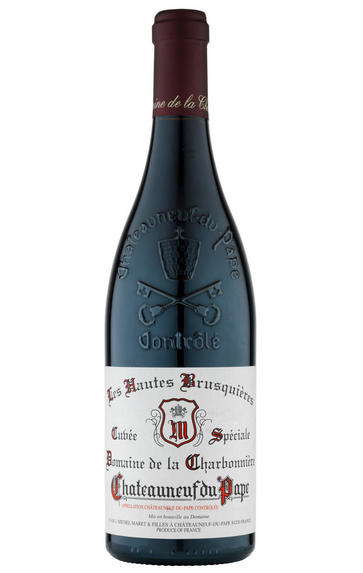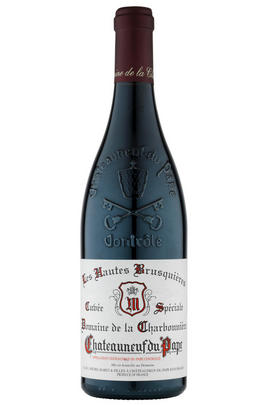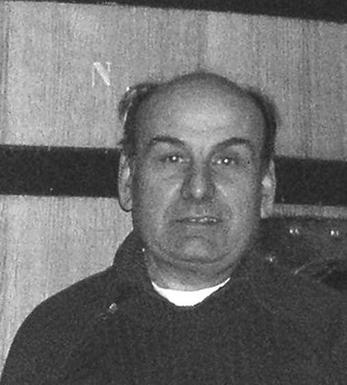
2013 Châteauneuf-du-Pape, Mourre des Perdrix, Domaine de la Charbonnière, Rhône

About this WINE

Domaine de la Charbonniere
Domaine de la Charbonnière was purchased by Eugene Maret in 1912. 90 years later and it is still a family-owned affair. The taciturn Michel Maret is a man of the soil, his reticence more than compensated by the eloquence of his wines, on the one hand, and the loquacious nature of his wife on the other. The two charming daughters, Véronique and Caroline, have found respective niches in the vineyard and the commercial function. All in all a complete and happy team, a facet once again echoed in the wines.Domaine de la Charbonniere owns 17.5 hectares of vineyards in the Châteauneuf du Pape appellation, as well as 4 hectares in Vacqueyras. Michel produces wonderfully well balanced wines that combine intensity and depth of fruit with finesse and elegance.
Michel Maret produces a number of different cuvees all from low yields and all bottled without filtration. His village cuvee is one of the best value wines in the appellation while the Cuvée Traditionnelle is a model of balance and purity of fruit.
The Cuvée Vieilles Vignes is produced from La Crau and is silkily rich with marvellous ageing potential while the Hautes Brusquières is a perennial favourite, atypical as it is with its high Syrah component. This is now one of Châteauneuf's leading domains and one can expect the quality to improve even more in the future if past results are any kind of guide.

Châteauneuf-du-Pape
The most celebrated village of the Southern Rhône, Châteauneuf-du-Pape is the birthplace of the now indispensable French Appellation d’Origine Contrôlée system – imperfect though it may be. Compared to the Northern Rhône, the vineyards here are relatively flat and often feature the iconic galet pebbles – the precise benefits of which are a source of much debate. Minimum alcohol levels required by the AOC are the highest in France, but at 12.5% it is well below the natural generosity of Grenache, which only achieves its full aromatic potential when it is fully ripe and laden with the resultant high sugars. Syrah and Mourvèdre contribute the other defining elements in the blend, adding pepper, savoury spice and structure to the decadent Grenache. There are a further 10 permitted red grape varieties which can be used to adjust the “seasoning”. Of the five white varieties permitted, it is Grenache Noir’s sibling – predictably perhaps – Grenache Blanc, which dominates, though Roussanne shows a great deal of promise when handled well, notably at Château de Beaucastel.

Southern Rhône Blend
The vast majority of wines from the Southern Rhône are blends. There are 5 main black varieties, although others are used and the most famous wine of the region, Châteauneuf du Pape, can be made from as many as 13 different varieties. Grenache is the most important grape in the southern Rhône - it contributes alcohol, warmth and gentle juicy fruit and is an ideal base wine in the blend. Plantings of Syrah in the southern Rhône have risen dramatically in the last decade and it is an increasingly important component in blends. It rarely attains the heights that it does in the North but adds colour, backbone, tannins and soft ripe fruit to the blend.
The much-maligned Carignan has been on the retreat recently but is still included in many blends - the best old vines can add colour, body and spicy fruits. Cinsault is also backtracking but, if yields are restricted, can produce moderately well-coloured wines adding pleasant-light fruit to red and rosé blends. Finally, Mourvèdre, a grape from Bandol on the Mediterranean coast, has recently become an increasingly significant component of Southern Rhône blends - it often struggles to ripen fully but can add acidity, ripe spicy berry fruits and hints of tobacco to blends.


Buying options
Add to wishlist
Description
Sandy soils in the eponymous and nicely named lieu-dit are at the root of this excellent example, the blend being Grenache (60 percent) and 20 percent each of Syrah and Mourvèdre. Kirsch and loganberry make for welcoming aromatics and the palate is silky and long. Distinctive and distinctly feminine, this cuvée provides a most eloquent counter-blast to those who decry the philosophy of multiple blends.
Simon Field MW - Rhône Buyer
Charbonnière is usually the first visit of our November week in the south and always proves a worthy barometer of the styles to be encountered thereafter-notwithstanding the rigours of tasting Châteauneuf-du-Pape at half past eight in the morning. Véronique now seems to be very much in charge, although this is clearly still a family affair, with a smart new tasting room further enhancing the welcome. The paucity of Grenache in 2013 is viewed with stoicism, its downside principally related to commercial shortage, rather than to the quality of the resulting wines, which are generally very impressive. A blend of 65% Grenache, 18% Mourvedre, 15% Syrah and the rest a mix of varieties, the 2013 Châteauneuf du Pape Mourre des Perdrix has a savory style in its dried earth, spice and kirsch-filled bouquet. Coming mostly from sandy soils and aged in a combination of tronconique tank and demi-muid, it’s medium-bodied, silky and nicely textured, with that fine-grained quality to its tannin that only comes from sandy soils. This beautiful 2013 will drink nicely on release and evolve for over a decade.
Jeb Dunnuck - Wine Advocate Issue##215 Oct 2014
wine at a glance
Delivery and quality guarantee